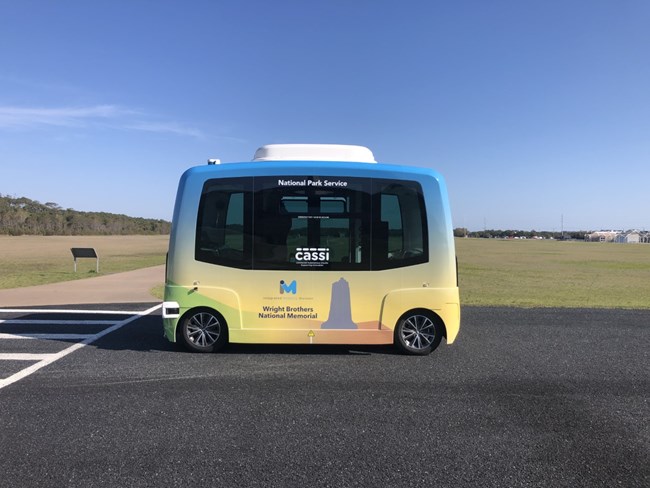
Connected – Traveler Information Technologies
The NPS is using traveler information technologies as a cost-effective way to reduce staff time devoted to directing traffic, enforce road closures, and seamlessly share transportation information with visitors. These encompass a range of technologies that can provide information about travel conditions, shuttle schedules, congestion, and parking availability. Part of the NPS strategy includes deploying infrastructure, also known as intelligent transportation systems (ITS), like transit vehicle locator systems, vehicle and parking lot counters, and variable message signs. The widespread adoption of smartphones and mobile technology also provides an opportunity to share real-time transportation information with the traveling public. NPS provides digital transportation infrastructure for third-party navigation applications, including shuttle routes and stop locations, parking space availability, and road closure information. NPS is enhancing the NPS app to integrate and provide visitors with trip planning and other transportation-related information.
Autonomous – Transit Demonstrations
Over the past decade, significant advancements have been made in driving automation technologies, ranging from advanced driver assistance systems (ADAS) that help support human drivers by providing minor interventions when needed to Automated Driving Systems (ADS) that serve as an operator and can drive the vehicle without input from a human driver. As these technologies continue to advance, they are changing how people access and engage with national parks and introduce new considerations for NPS related to the development and maintenance of transportation systems. Building upon lessons learned from the automated shuttle pilots at Yellowstone National Park and Wright Brothers National Memorial in 2021, the NPS tested an autonomous bus at Sleeping Bear Dunes National Lakeshore during the summer of 2024. In November 2024, DOT Intelligent Transportation Systems Joint Program Office (ITS-JPO) awarded NPS funding over three years to pilot fixed route and on-demand service and driver assist technologies. Lessons learned from these pilots will inform a national automation strategic plan.
Shared – Ridehailing and Micromobility
In many urban and suburban national parks, visitors already access parks via ridehailing services and micromobility devices. NPS is working with ridehailing companies to establish dedicated pick-up and drop-off areas at select park locations in order to enhance visitor safety and efficiency and plan for special events while improving congestion management. Micromobility includes shared or private e-scooters, bikeshare, or other small, lightweight, wheeled conveyances. NPS is strategizing on how these devices can expand access to parks while minimizing negative effects. Washington D.C.’s Capital Bikeshare and Minneapolis’s Nice Ride feature bikeshare stations within NPS boundaries, planned in partnership with NPS. NPS sites in urban areas, such as the National Mall and Golden Gate National Recreation Area, are managing the arrival of dockless e-scooter systems by working with partners to exclude devices from sensitive areas and proactively remove abandoned scooters.
Last updated: March 24, 2025
